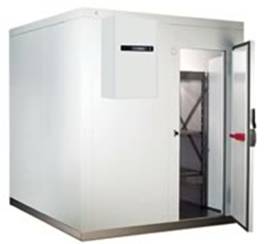|
Types of storage
1. Storage at ambient temperature and humidity
Seeds can be stored in piles, single layers, sacks or open containers, under shelter against rain, well ventilated and protected from rodents and store at least for several months.
2. Dry storage with control of moisture content but not temperature
Orthodox seeds will retain viability longer, when dried to low moisture content (48%) and then stored in a sealed container or in a room in which humidity is controlled, than when stored in equilibrium with ambient air humidity. Cool condition is especially favourable.
3. Dry storage with control of both moisture content and temperature
This is recommended for many orthodox species which have periodicity of seeding but which are planted annually in large scale afforestation projects. A combination of 4-8% moisture content and 0 to 5° temperature will maintain viability for 5 years or more.
4. Dry storage for long-term gene conservation
Long-term conservation of gene resources of orthodox agricultural seeds is -18°C temperature and 5±11% moisture content
5. Moist storage without control of moisture content of temperature
Suitable for storage of recalcitrant seeds, for a few months over winter. Seeds may be stored in heaps on the ground, in shallow pits, in well drained soils or in layers in well ventilated sheds, often covered or mixed with leaves, moist sand, peat or other porous materials. The aim is to maintain moist and cool conditions, with good aeration to avoid overheating which may result from the relatively high rates of respiration associated with moist storage. This may be accomplished by regular turning of the heaps.
| 6. Moist cold storage, with control of temperature
This method implies controlled low temperature just above freezing or less commonly, just below freezing. Moisture can be controlled within approximate limits by adding moist media e.g., sand, peat or a mixture of both to the seed, in proportions of one part media to 1 part seed by volume, and re-moistening periodically or more accurately by controlling the relative humidity of the store. This method is much applicable to temperate recalcitrant genera. |
 |
7. Cryopreservation
It is also called as cryogenic storage. Seeds are placed in liquid nitrogen at -196°C. Seeds are actually placed into the gaseous phase of the liquid nitrogen -150°C for easy handling and safety. Metabolic reactions come to a virtual standstill at the temperature of liquid nitrogen and the cells will remain in an unaltered state until the tissues are removed from the liquid nitrogen and defrosted. Therefore, little detrimental physiological activity takes place at these temperatures, which prolongs the storage life of seeds. It is not practical for commercial seed storage, but is useful to store the valuable germplasm.
|

